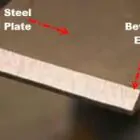We all know that AC/DC isn’t just the name of a hard rock band, but that it also stands for alternating current (AC) and direct current (DC) (DC). But what is the point of alternating current? Why is it important for aluminium? In this case, what are half-waves? What is a “cap,” anyway?
AC Welding.
When tungsten inert gas welding is used to join two pieces of aluminium, alternating current is used. Why?
Aluminum is hard to weld because it is surrounded by a layer of oxide, which makes it hard to melt. This only melts at about 2015 degrees Celsius, while aluminium itself melts at around 650 degrees, depending on the alloy. This means that the aluminium would run away while the oxide layer was being melted, making it impossible to weld. In order for the process to work, the oxide layer needs to be broken up or moved.
When alternating current (AC) is used to weld, the electrode keeps switching from plus to minus. When the electrode is set to “positive,” electrons with a negative charge move from the workpiece into the electrode. This breaks the oxide layer. The electrode is then turned to the negative side. When electrons move into the workpiece, they create heat. This is how the penetration needed for the weld seam happens.
Waveforms.
Welding current sources that can be used with AC have an inverter that makes AC. Many welding systems have different settings that let you choose how the current should act when it switches between plus and minus. Different half-wave forms can be chosen by the user.
For example, the current can flow at the same strength first in the positive range and then in the negative range. This makes a hard rectangle. When this setting is used, the arc is very stable, but the welder doesn’t like how loud the machine is. They may even need to wear hearing protection while they work. Waves can also be smooth and go in a circle. Then, the arc isn’t stable, but the sound of welding is nice and quiet. Most of the time, a combination of the two—a rectangle with rounded corners for the negative half-wave and a sine wave for the positive half-wave—is the best option when working with aluminium.
The Fronius MagicWave welding system has a triangle shape for a stable arc with high pressure and a lot of different ways to combine all waveforms. So, the welder can choose just the right setting for the job at hand.
Cap.
When you buy a tungsten electrode, the end of it is flat. Before it can be used with direct current, the electrode is sharpened. In alternating current welding, on the other hand, the end of the tungsten electrode needs to be half-circular so that the arc can be controlled well. “Cap” is another word for the round end.
In the past, this cap was made by welders spending several minutes welding on a piece of copper. The high temperatures melted the tungsten electrode, leaving a droplet on the end of the electrode. This droplet is called the semicircular cap. Modern welding systems have a feature that automatically rounds the end of the tungsten electrode. This is done by passing a certain amount of current through the electrode for a certain amount of time, which depends on the diameter of the electrode.





